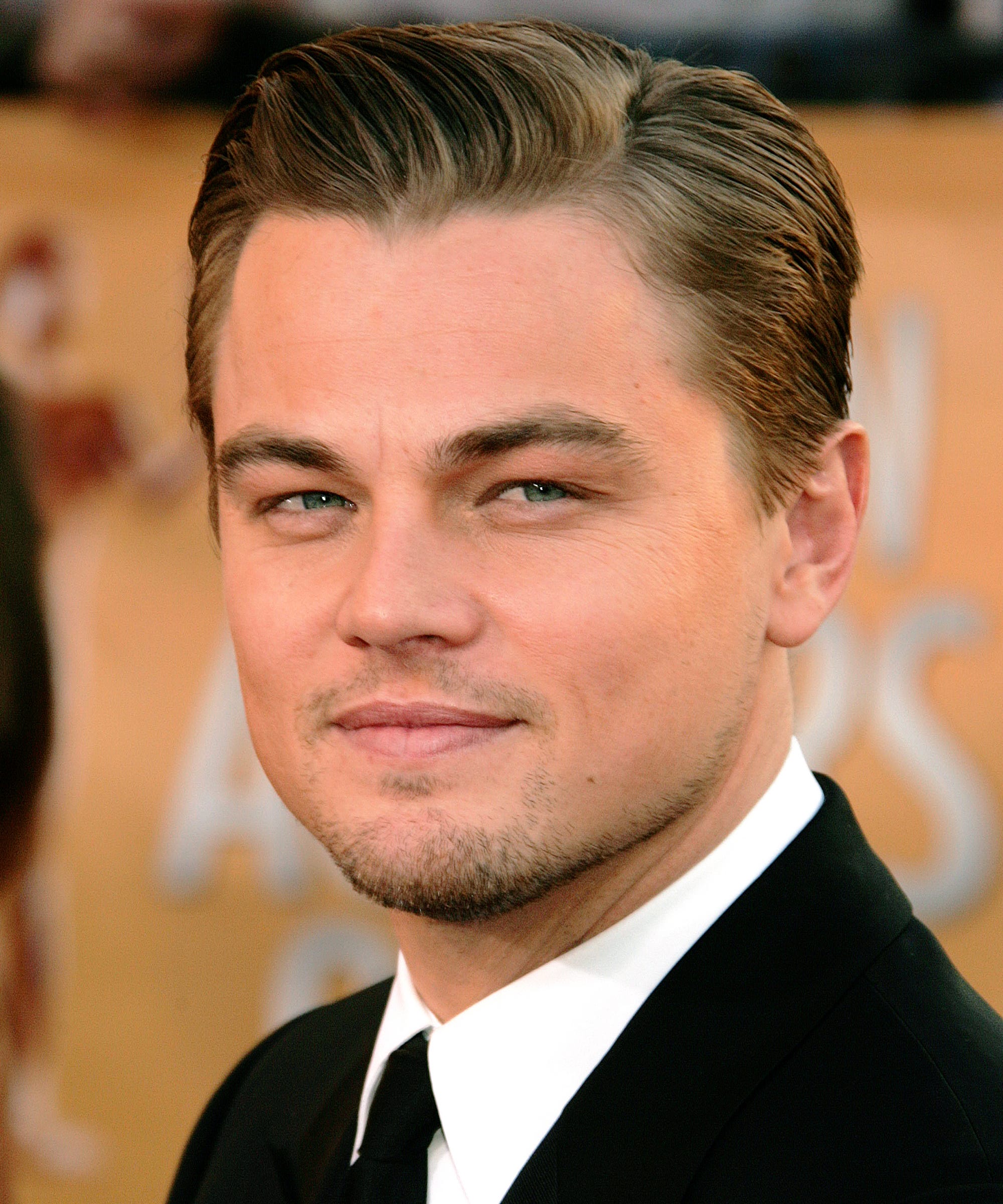
In the captivating world of film and television, certain performances transcend mere acting, demanding a complete metamorphosis from the actors portraying them. These transformations are not just about wearing a costume or reciting lines; they involve a profound commitment to altering one’s physical self, often to an astonishing degree. From drastic weight fluctuations to hours spent under intricate prosthetics, these artists push the boundaries of their craft, all in the name of authentic storytelling and bringing unforgettable characters to life on screen.
It’s a testament to their dedication that sometimes, the actor behind the character is utterly unrecognizable, surprising even their co-stars or seasoned fans. These remarkable makeovers prove how far performers are willing to go, embracing challenges that redefine their appearance and embody the very essence of their roles. They remind us that true acting often extends beyond the visible, delving into the physical and emotional extremes required to deliver a truly immersive performance.
Today, we embark on a fascinating journey into the realm of extreme transformations, spotlighting some of the most jaw-dropping instances where actors vanished into their roles. We’ll explore the incredible efforts, the meticulous artistry of makeup and effects teams, and the sheer willpower demonstrated by these individuals to create performances that are not only critically acclaimed but also etched into the annals of cinematic history. Prepare to be amazed as we uncover the secrets behind these radical on-screen changes.

1. **Colin Farrell: Disappearing into The Penguin with Masterful Prosthetics**When the first trailer for Matt Reeves’ “The Batman” dropped, it immediately ignited a firestorm of discussion, not just for its grim, Fincher-esque atmosphere or Robert Pattinson’s brooding Bruce Wayne, but for one particularly shocking reveal: Colin Farrell’s transformation into Oswald Cobblepot, better known as The Penguin. Fans and critics alike were left reeling, barely recognizing the charismatic Irish actor beneath layers of intricate makeup. It was a complete obliteration of his familiar leading-man looks.
Farrell’s incredible transformation was the brainchild of artist Mike Marino, a veritable genius in the field of prosthetics. Marino’s impressive resume includes acclaimed films like “The Irishman,” “Black Swan,” and “I Am Legend,” alongside television hits such as “Boardwalk Empire” and “True Detective.” His work on Farrell was so effective that it even stumped co-star Jeffrey Wright, who reportedly “walked right past Farrell on set without any idea it was his co-star.” This anecdote alone speaks volumes about the immersive quality of the makeup.
Farrell himself expressed immense admiration for Marino’s artistry, stating, “Mike Marino is a genius. He’s an absolute and veritable genius. And that word gets thrown out a lot, but he is a drawing, sculpting, shaping genius.” He further elaborated on how seeing the prosthetic design solidified his understanding of the character: “When I saw what Mike did, the whole character made sense to me. I swear to God, I saw what he did, and I just went ‘OK,’ and I got really excited about it.” The actor, clearly recognizing the pivotal role of the transformation, even joked, “All that to say that if anyone ever thinks what I do at ‘The Batman’ is a decent performance, I’ll gladly take 49% of the credits.” It’s a powerful acknowledgment of how external change can unlock internal performance.

2. **Nicole Kidman: The Subtle Yet Profound Change for Virginia Woolf in ‘The Hours’**Nicole Kidman delivered an Academy Award-winning performance in 2002’s ‘The Hours,’ an adaptation of Michael Cunningham’s novel. The film intricately weaves together the lives of three women connected by Virginia Woolf’s seminal work, ‘Mrs. Dalloway,’ with Kidman taking on the challenging role of Woolf herself. While not as outwardly dramatic as some full-body transformations, Kidman’s portrayal necessitated a significant alteration to her appearance, primarily through the use of a prosthetic nose.
This seemingly small adjustment had a profound impact, significantly changing her recognizable facial features to more closely resemble the iconic author. The intention was not to create an entirely different person, but rather to subtly shift the audience’s perception, allowing them to see Woolf rather than the glamorous movie star. It was a delicate balance of acting prowess and precise makeup artistry that earned her immense critical acclaim and an Oscar for Best Actress.
Kidman’s transformation for “The Hours” serves as a powerful reminder that not all dramatic makeovers rely on extreme prosthetics or weight changes. Sometimes, a carefully placed and expertly crafted prosthetic element can be enough to unlock a character’s essence, allowing the actor to fully inhabit the role and convince audiences of their authenticity. It speaks to the power of nuanced physical alteration when combined with a deeply empathetic performance.
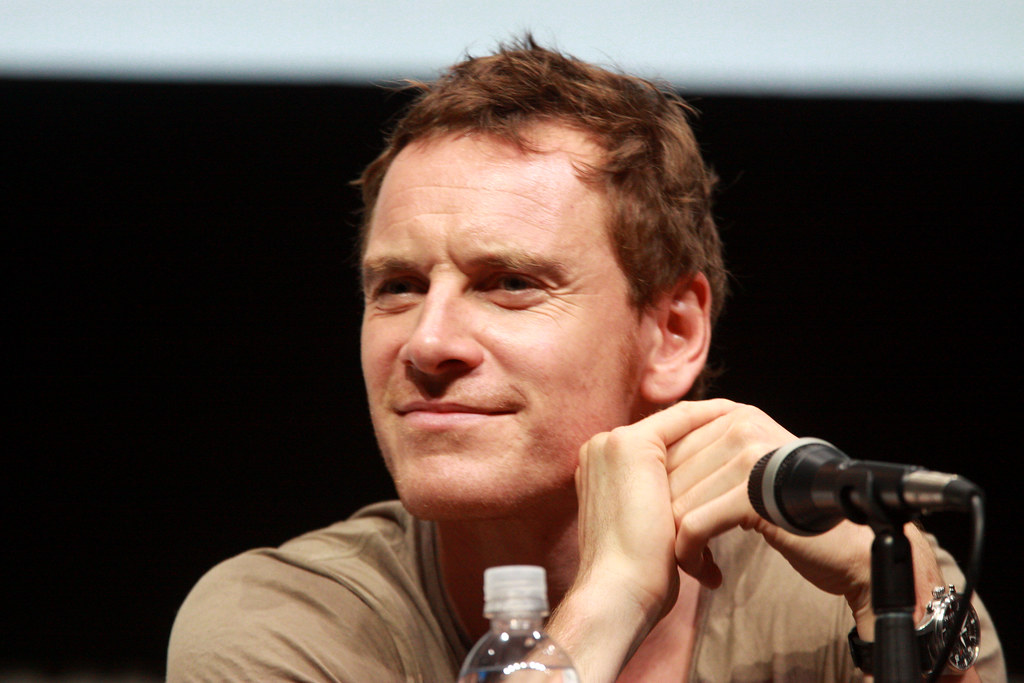
3. **Michael Fassbender: The Harrowing Physical Commitment to ‘Hunger’**In Steve McQueen’s powerful debut film ‘Hunger,’ Michael Fassbender undertook one of the most physically demanding transformations ever seen on screen. He portrayed Bobby Sands, an IRA member who led a devastating 1981 hunger strike while imprisoned by the British government. To authentically embody Sands, who tragically died as a result of the strike, Fassbender committed to an incredibly rigorous and dangerous diet.
The actor consumed “less than 900 calories for 10 weeks” resulting in a dramatic weight loss of “40 pounds.” This extreme physical commitment was not merely for visual effect; it was an integral part of understanding and conveying the suffering, resilience, and ultimate sacrifice of Bobby Sands. Fassbender’s gaunt appearance became a visceral representation of the character’s deteriorating body and unyielding spirit.
His dedication pushed the boundaries of what actors are willing to endure for a role, demonstrating a profound commitment to his craft. The emaciated physique was not just an aesthetic choice; it was a testament to the harrowing reality of the hunger strike, adding immense realism and emotional weight to his acclaimed performance. Fassbender’s work in “Hunger” is often cited as a benchmark for method acting and physical transformation.
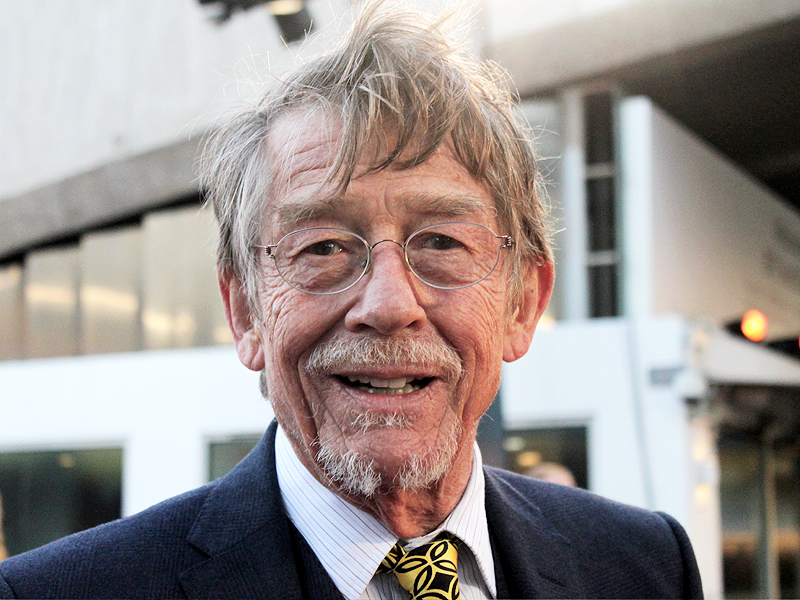
4. **John Hurt: Enduring Hours of Makeup for the Unforgettable ‘Elephant Man’**John Hurt’s portrayal of John Merrick, the titular character in David Lynch’s 1980 film “The Elephant Man,” stands as one of cinema’s most iconic and groundbreaking prosthetic transformations. Merrick, a slightly fictionalized version of the real-life Joseph Merrick, suffered from severe physical deformities, and Hurt’s commitment to embodying this challenging role was extraordinary, requiring immense endurance and patience.
Each day during production, Hurt spent an astounding “seven to eight hours” in the makeup chair. This arduous process was necessary to apply the extensive prosthetics designed by Christopher Tucker, which were meticulously based on “casts of Merrick’s body from the Royal London Hospital’s archives.” The goal was an unflinching, accurate depiction of Merrick’s condition, and the result was truly transformative.
The sheer scale of the makeup work made it “one of the original and most famous prosthetics transformations in film” history. Hurt’s performance, delivered from beneath layers of rubber and latex, conveyed profound humanity and vulnerability, earning him an Academy Award nomination. His dedication ensured that audiences saw beyond the shocking exterior to the sensitive soul within, solidifying “The Elephant Man” as a classic and Hurt’s performance as legendary.
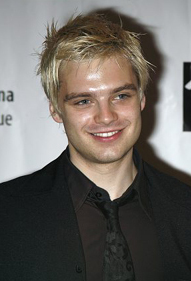
5. **Sebastian Stan: Crafting a New Identity for ‘A Different Man’**Sebastian Stan, known for his Emmy-nominated work in “Pam and Tommy,” is set to stun audiences again with his transformation in the A24 drama “A Different Man,” a film not yet released. In this highly anticipated project, Stan embodies Edward, a man who undergoes facial reconstructive surgery and subsequently becomes obsessed with the actor cast to play him in a theatrical production based on his own life. The premise itself hints at a deep exploration of identity and appearance.
Stan gave fans a tantalizing glimpse of his remarkable transformation in July 2022, sharing an Instagram photo of himself in character. The image revealed a radical departure from his usual look, showcasing “extensive makeup designed to depict neurofibromatosis.” This kind of transformation promises a complex visual narrative, where the physical changes are central to the character’s psychological journey.
The nature of the role suggests that Stan’s performance will lean heavily on movement and embodiment, perhaps more than overt facial expressions, given the prosthetic work. His portrayal of Edward, a character grappling with a new face and the implications of being depicted by another, highlights the actor’s versatility and willingness to tackle roles that demand a complete physical and internal shift. It’s a testament to Stan’s commitment to immersing himself in challenging roles and delivering performances that resonate deeply.

6. **Lily James: The Internet-Breaking Transformation into Pamela Anderson for ‘Pam and Tommy’**Lily James absolutely broke the internet in May 2021 when the first-look photos of her as Pamela Anderson for the Hulu limited series “Pam and Tommy” debuted. Directed by “I, Tonya” filmmaker Craig Gillespie and written by “The Wrestler” scribe Rob Siegel, the series brought renewed attention to the scandal surrounding the stolen sex tape of Tommy Lee and Pamela Anderson. While Sebastian Stan also starred as Lee, it was unequivocally James’s uncanny and unrecognizable transformation into Anderson that became the primary talking point.
The meticulous process involved extensive prosthetic work, expertly crafted wigs, a precise tan, and careful eyebrow shaping, all meticulously combined to turn James into a startling Pamela look-alike. Gillespie noted the parallel to “I, Tonya,” explaining that “In some ways, it’s very similar to ‘I, Tonya’ with the surprise of it.” He added that the goal was to not just mimic Anderson’s appearance but to recontextualize the entire scandal, highlighting “the victimization of the media and what happened with that tape that was such an affront to them, and how it really ultimately severely damaged their personal life and her career.”
This commitment to physical authenticity allowed the series to delve deeper into the narrative, moving beyond public perception. James’s ability to disappear so completely into Anderson’s skin was crucial for telling a story that aimed to challenge the public’s preconceived notions, which often snickered, believing “They sold it.” Instead, the show aimed to reveal how “people just don’t know the story,” and James’s transformation was key to achieving that narrative depth and empathetic portrayal.
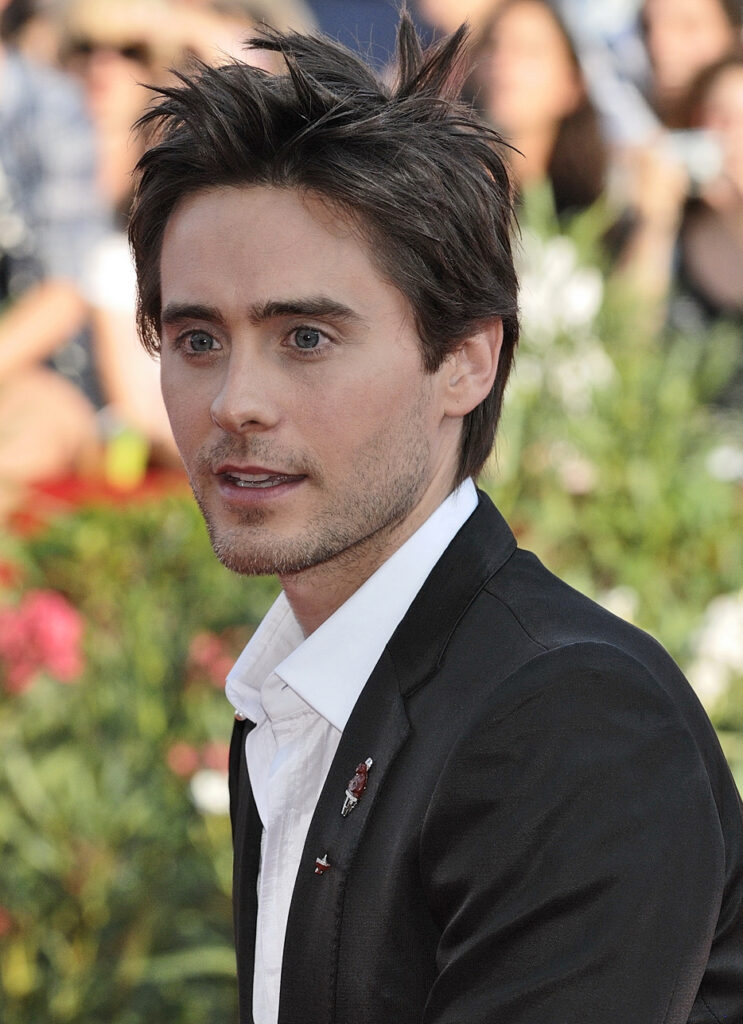
7. **Jared Leto: Becoming the Unrecognizable Paolo Gucci in ‘House of Gucci’**Ridley Scott’s murder drama “House of Gucci” arrived with a massive buzz, much of it surrounding Jared Leto’s truly astonishing transformation into Paolo Gucci. This makeover was so impressive, it almost overshadowed the star-power pairing of Lady Gaga and Adam Driver in the lead roles, a testament to the sheer dramatic effect achieved. Leto appeared under heavy makeup and prosthetics, making him nearly unrecognizable as Paolo, who was the son of Aldo Gucci and grandson to the fashion house’s founder, Guccio Gucci.
Leto’s dedication to the role saw him adopt a balding hairline, full prosthetics to alter his facial structure and body shape, and an altered posture. The cumulative effect was a complete physical overhaul that made it genuinely difficult to discern the Oscar winner beneath the guise of the often-overlooked and somewhat tragic figure of Paolo. This level of immersion speaks volumes about Leto’s commitment to pushing the boundaries of physical acting.
However, not everyone was pleased with the transformation. Patrizia Gucci, great-grandchild of Guccio Gucci, publicly condemned the project to the Associated Press, specifically criticizing the casting and appearance of Al Pacino and Jared Leto. She expressed her disdain for Leto’s portrayal, noting the “unkempt hair and a lilac corduroy suit” revealed in set photos of Paolo. Patrizia stated, “Horrible, horrible,” and added, “I still feel offended,” illustrating how deeply these physical portrayals can impact those connected to the real-life figures. Despite the controversy, Leto’s transformation undeniably captured significant attention and became a focal point of discussion around the film.
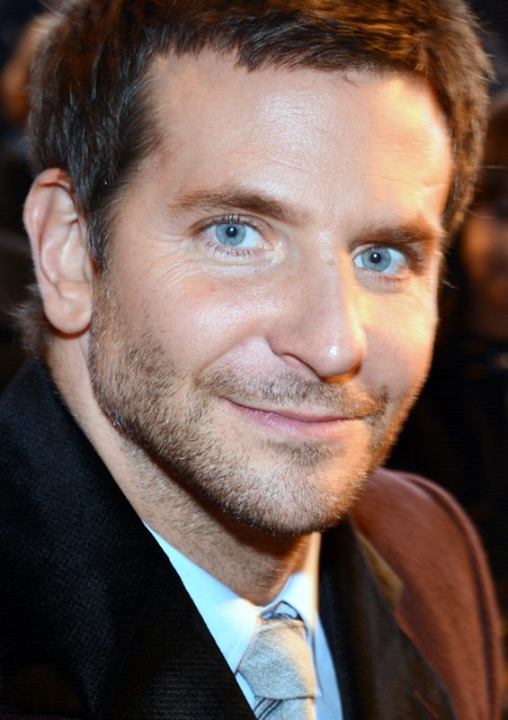
8. **Bradley Cooper: Embodying Leonard Bernstein Across Decades in ‘Maestro’**Bradley Cooper’s ambitious turn as the legendary composer Leonard Bernstein in “Maestro” necessitated a physical transformation that spanned different stages of the maestro’s life. This was no small feat, as Cooper was tasked with portraying Bernstein from his younger, vibrant years all the way through his final, more aged decades, demanding meticulous attention to detail in his appearance. It’s a testament to his dedication that audiences can truly believe they are watching the same character evolve over time.
For the earlier period of Bernstein’s life, Cooper subtly employed a nose prosthetic, a focused alteration that helped to sculpt his familiar features into a closer resemblance of the younger composer without overwhelming his natural acting. However, as the narrative progresses into Bernstein’s later years, the transformation became far more extensive, involving layers of sophisticated old-age makeup designed to authentically portray the passage of time and the physical changes that accompany it. This careful progression allowed for a seamless and believable portrayal across the character’s lifespan.
The work involved in crafting these distinct looks was crucial for the film’s narrative authenticity, ensuring that Cooper could convincingly inhabit Bernstein at any given moment. This dual-phase transformation highlights the nuanced artistry of cinematic makeup, proving that sometimes the magic lies in both subtle enhancements and comprehensive overhauls to fully capture a historical figure’s essence. The commitment to these physical changes undoubtedly helped Cooper deliver a deeply immersive and critically acclaimed performance.
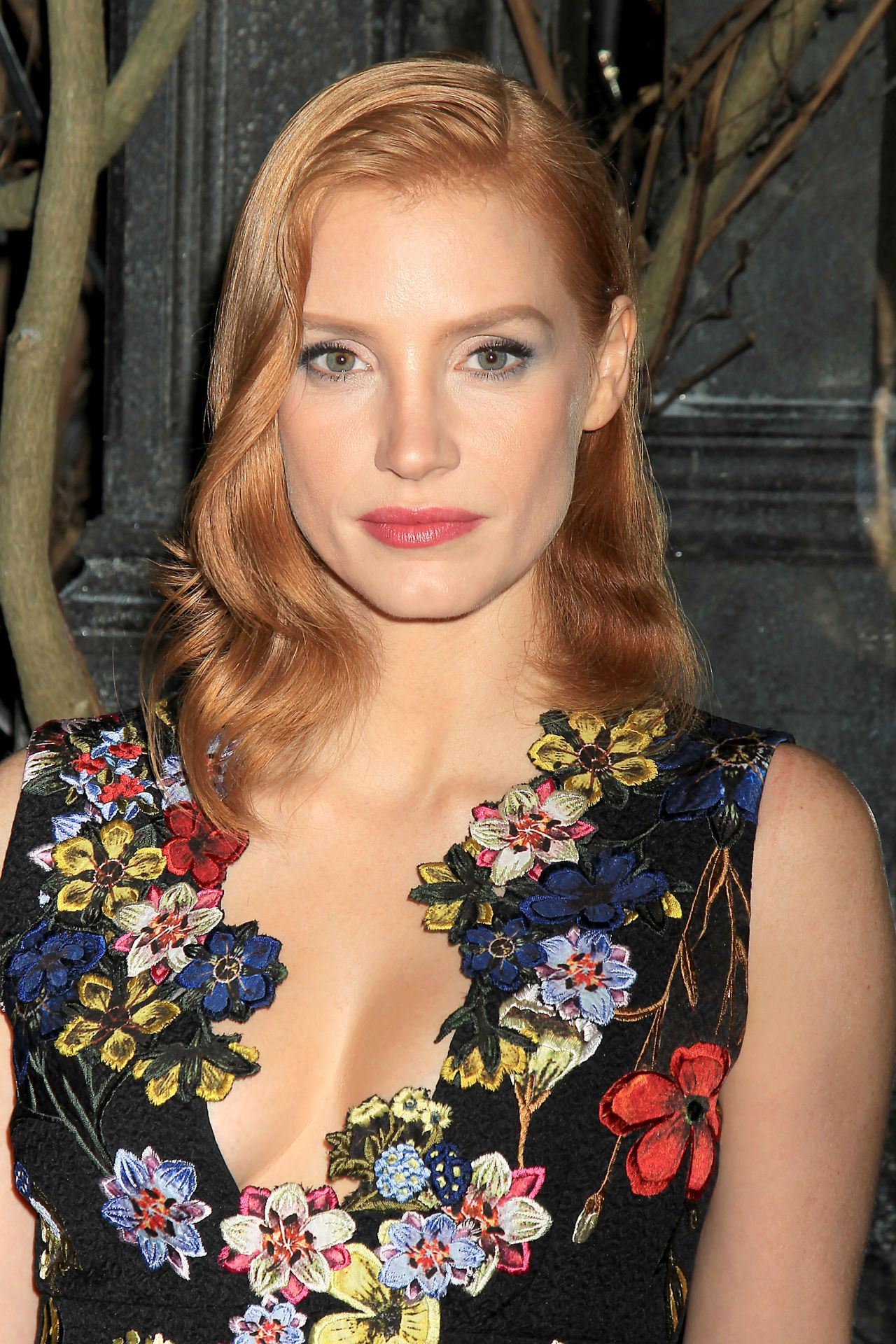
9. **Jessica Chastain: The Elaborate Daily Ritual for Tammy Faye in ‘The Eyes of Tammy Faye’**Jessica Chastain took on the iconic role of Christian televangelist Tammy Faye Bakker in “The Eyes of Tammy Faye,” a portrayal that demanded an astonishing commitment to daily physical transformation. To become Tammy Faye, known for her distinctive and often heavily made-up look, Chastain spent an incredible “four hours in makeup every day,” a testament to the meticulous artistry involved. This was a collaborative effort with longtime makeup artists Linda Dowds, Stephanie Ingram, and Justin Raleigh, who were instrumental in crafting the character’s signature appearance.
Chastain’s transformation went far beyond simple cosmetics; it involved extensive prosthetic work that covered nearly her entire face. She revealed to People that “every inch of her face was covered in makeup or prosthetics,” detailing specific adjustments such as sealing up her chin dimple, which Tammy Faye didn’t have, and adding prosthetics to her cheeks to achieve a rounder facial structure. These precise modifications were vital in reshaping Chastain’s natural features to mirror those of Tammy Faye.
This profound physical alteration was not just for show; it deeply informed Chastain’s performance. She acknowledged that the expertise of the makeup team “just helped me so much with my confidence in playing her,” allowing her to fully embrace the character from the outside in. The comprehensive and daily nature of this transformation underscores the sheer dedication required to disappear into such a recognizable public figure, making her Academy Award-winning performance all the more remarkable.

10. **Donald Glover: Shocking Audiences as the Enigmatic Teddy Perkins in ‘Atlanta’**Donald Glover’s transformation into the eerie and enigmatic Teddy Perkins for an eponymous episode of “Atlanta” instantly became a cultural phenomenon, leaving fans utterly shocked and captivated. The April 5, 2018 episode featured Glover in heavy prosthetics and whiteface makeup, creating a character so distinct and unnerving that many viewers—and even his co-stars—had no idea it was him. It’s a masterful example of an actor completely disappearing into an almost surreal persona.
The extent of Glover’s commitment to the role was profound. Derrick Haywood, who played Teddy Perkins’ brother Benny in the episode, famously recalled to Vulture, “Initially, I had no idea that Teddy Perkins was actually played by Donald Glover.” He elaborated that Glover maintained the character’s makeup and high-pitched voice throughout the entirety of filming, even off-camera, further cementing the illusion. This dedication to staying in character deeply contributed to the uncanny and immersive nature of the performance.
Even series regular Lakeith Stanfield was fooled, telling THR, “I was like, ‘Wow, this is a very interesting fellow.’” Stanfield even tried to learn more about the mysterious actor, only for Glover to provide a fabricated history, claiming he had been acting for a long time. The illusion was so powerful that Stanfield expressed regret when someone finally “spilled the beans,” wishing “the illusion would’ve gone on a little longer.” This episode is a standout for its bold creative choices and Glover’s astonishing, boundary-pushing transformation.
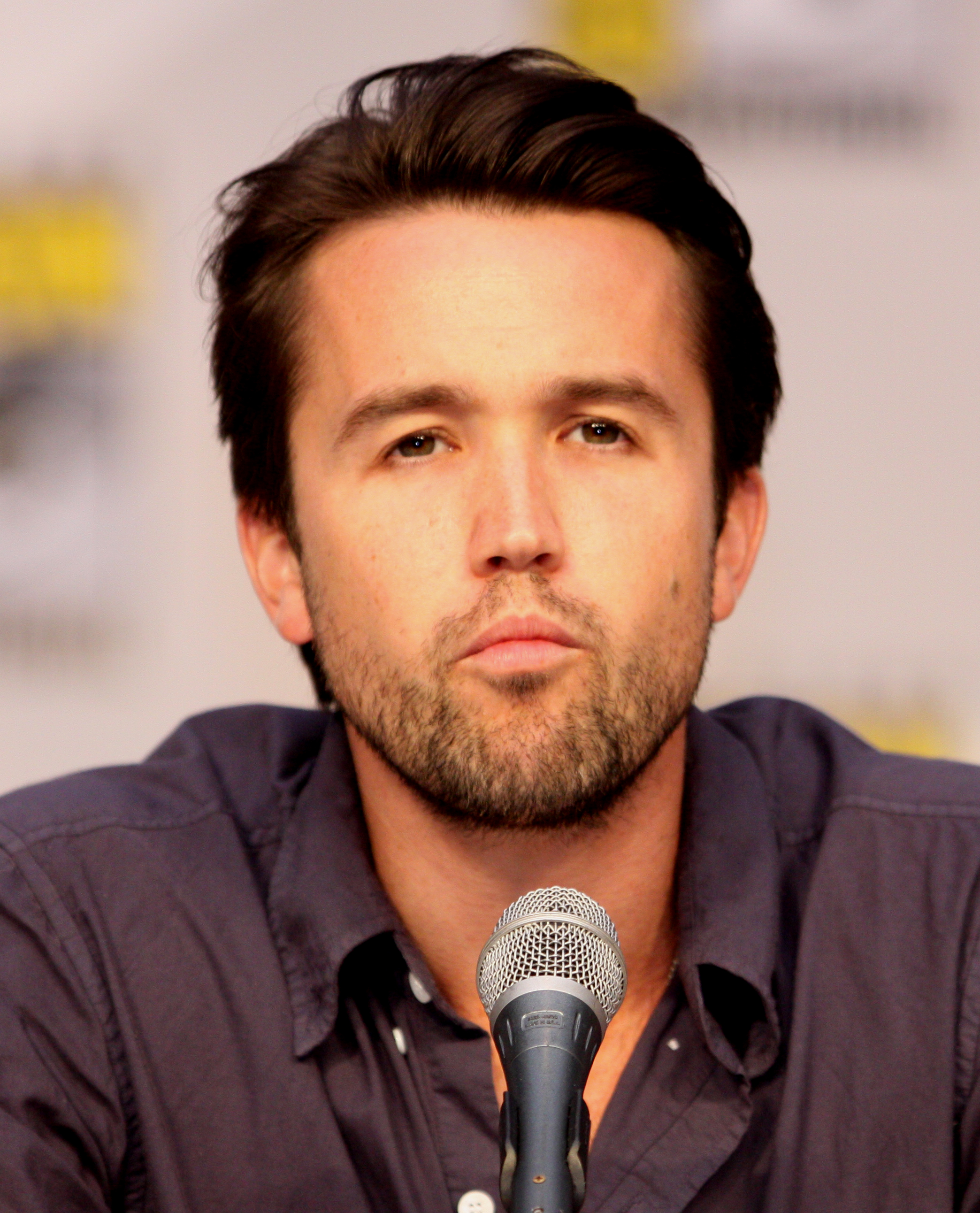
11. **Rob McElhenney: The Satirical Weight Fluctuations for ‘It’s Always Sunny in Philadelphia’**Rob McElhenney, co-creator and star of “It’s Always Sunny in Philadelphia,” has become renowned for two incredibly distinct and impactful physical transformations on the show: first as “Fat Mac” and later as “Jacked Mac.” These changes weren’t just about aesthetic alteration; they were deeply rooted in a satirical commentary on character vanity and the very concept of actor transformations themselves, bringing an unexpected layer of meta-humor to the long-running comedy series.
For the show’s seventh season, McElhenney famously gained “50 pounds” to portray his character’s increasing bulk. He candidly shared the challenges of this process with The Wrap, initially trying a healthy diet of “chicken breast and rice and vegetables.” However, he soon found himself opting for less nutritious but more calorie-dense options, noting, “when you’re four months in it and you have to muscle down 1,000 calories for the third time or fourth time in a day and you have to either eat three chicken breasts, two cups of rice and two cups of vegetables — or one Big Mac — you start to see the Big Mac and realize it’s a lot easier to get down.” He even admitted to consuming “three donuts” every once in a while and a “high-calorie protein shake” daily, showcasing the extreme measures taken for the comedic effect.
Just as shockingly, starting with the 13th season in 2018, McElhenney underwent another dramatic shift, transforming into an incredibly muscular “Jacked Mac.” He revealed his rigorous regimen on Instagram, detailing how he achieved this shredded physique by “lifting weights six days a week, running three miles a day, sleeping nine hours a night, and cutting out carbs, sugar, and alcohol.” This complete reversal highlighted his incredible discipline and further underscored the character’s obsessive personality, offering a visual punchline that delighted fans.
McElhenney’s willingness to push his body to such extremes, all for the sake of a sitcom character, is a unique and celebrated aspect of his comedic genius. His transformations serve as both a hilarious physical gag and a subtle critique of Hollywood’s demands, proving that dedication to a role can manifest in truly unexpected and profoundly entertaining ways.

12. **Tilda Swinton: The Chameleonic Act of Becoming Dr. Josef Klemperer in ‘Suspiria’**Known for her incredible versatility, Tilda Swinton truly outdid herself in Luca Guadagnino’s “Suspiria” reimagining, where she played not one, but three characters. While she appeared as herself in one role, her transformation into the elderly male character, Dr. Josef Klemperer, was nothing short of astonishing and left many viewers completely unaware of her presence beneath the layers of meticulously crafted makeup.
The comprehensive overhaul to create Dr. Klemperer was spearheaded by Oscar-winning makeup artist Mark Coulier, who previously worked with Swinton on her acclaimed transformation for “The Grand Budapest Hotel.” Coulier explained to The New York Times that he “thickened Swinton’s neck with prosthetics and built her jaw out to look heavier and more masculine” in order to convincingly turn the actress into an 82-year-old man. This intricate process demanded that Swinton spend “four hours in the makeup chair each day,” a testament to her patience and the team’s artistry.
Beyond the facial and neck prosthetics, Swinton’s commitment extended to an unusual personal request. Coulier revealed that to fully inhabit her male character, Swinton specifically asked him to craft a male reproductive organ. He recalled, “She did have us make balls,” elaborating, “She had this nice, weighty set of genitalia so that she could feel it dangling between her legs, and she managed to get it out on set on a couple of occasions.” This anecdote underscores the profound depths to which Swinton is willing to go to embody her characters, ensuring an authentic physical and psychological experience.
This incredible transformation, which made her virtually unrecognizable, showcases Swinton’s unparalleled ability to disappear into a role, challenging audience perceptions and proving her status as a true acting chameleon. Her work as Dr. Klemperer stands as one of the most remarkable and comprehensive gender-bending transformations in cinematic history.
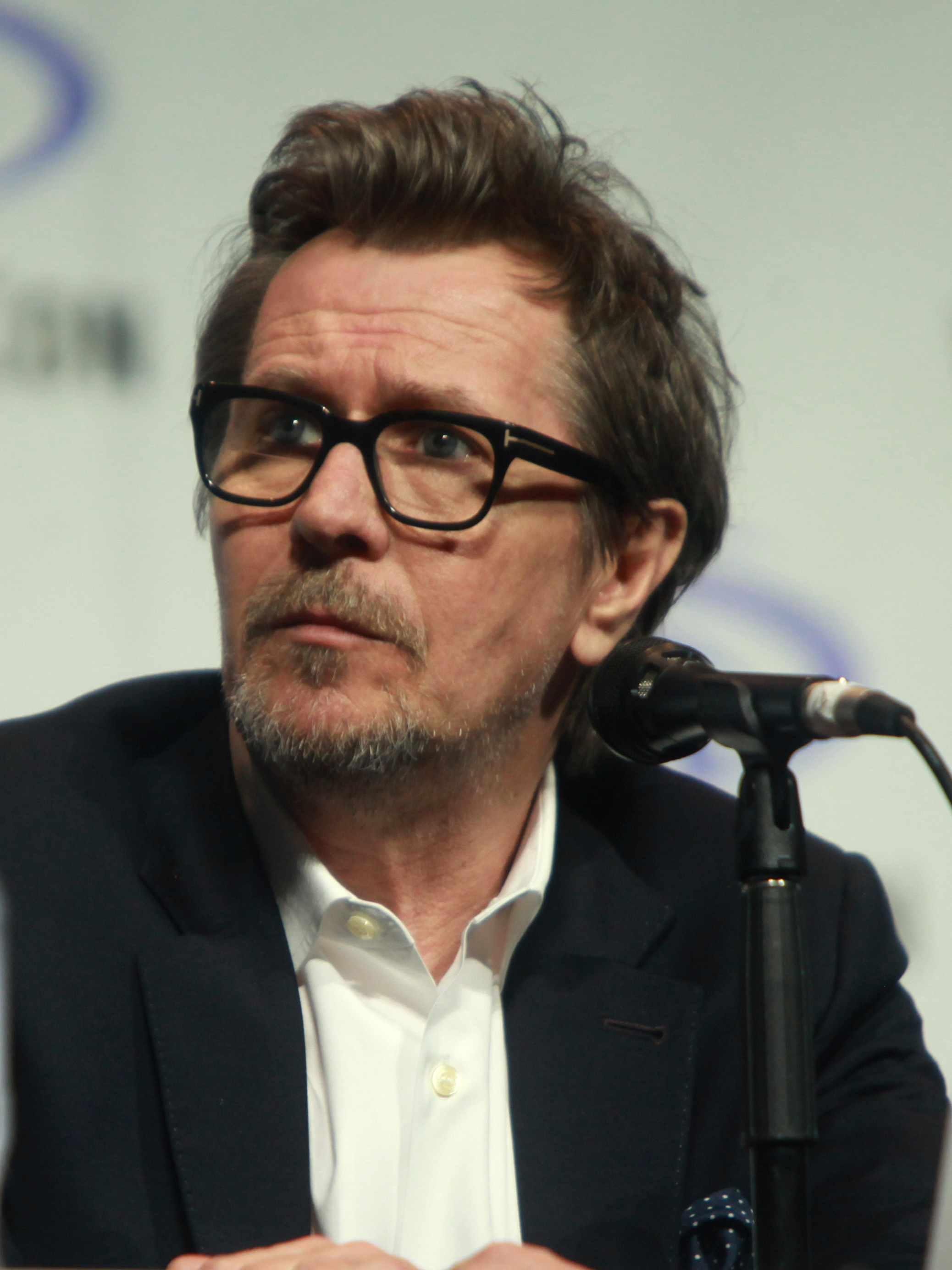
13. **Gary Oldman: The Oscar-Winning Embodiment of Winston Churchill in ‘Darkest Hour’**Gary Oldman delivered an Academy Award-winning performance as Winston Churchill in Joe Wright’s historical drama “Darkest Hour,” a portrayal made unforgettable by one of the most remarkable prosthetic transformations in recent memory. This monumental undertaking was helmed by legendary makeup artist Kazuhiro Tsuji, who actually came out of retirement specifically to tackle the challenge of transforming Oldman into the iconic British Prime Minister. The result was so convincing that it earned Oldman his Best Actor Oscar and Tsuji the Academy Award for Best Makeup and Hairstyling.
Tsuji’s approach to the transformation was incredibly thorough, involving “six months testing various makeup techniques” to ensure a lifelike and accurate depiction of Churchill. He faced significant challenges due to the stark physical differences between Oldman and Churchill, as he explained to Variety: “Likeness makeup is almost impossible to pull off because everybody looks different. If the two people have proportions that are close, it’s easier. But these two are totally different. So I had to figure out the best balance to make him look like Churchill, but not [like he’s] wearing a mask.” This highlights the precision and artistry required to achieve such a believable look.
The transformation involved extensive silicone prosthetics that altered Oldman’s facial structure, jowls, and even his body shape, painstakingly applied each day. This was not merely about recreating a visual likeness; it was about allowing Oldman to physically inhabit Churchill, giving him the freedom to embody the former Prime Minister’s mannerisms, posture, and gravitas. The sheer detail and commitment paid off, creating a historical figure that felt uncannily real on screen and cemented its place as a benchmark for biographical transformations.
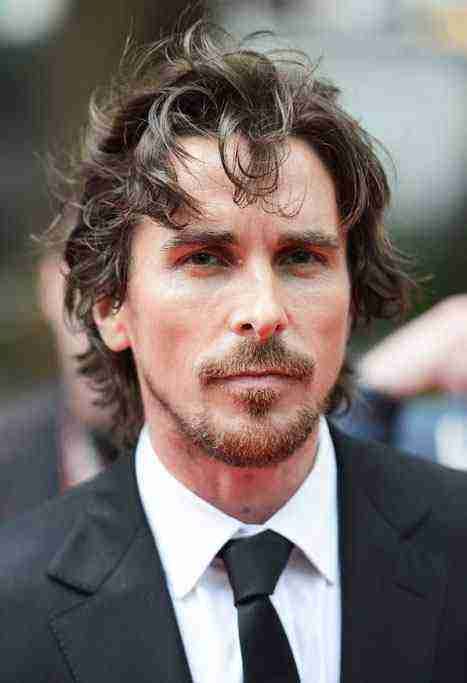
14. **Christian Bale: The Gaunt and Haunting Extremity of Trevor Reznik in ‘The Machinist’**Christian Bale is a name synonymous with extreme physical transformations, and his role as Trevor Reznik in Brad Anderson’s psychological thriller “The Machinist” stands as one of his most famous and unsettling. To play an insomniac factory worker tormented by paranoia and guilt, Bale undertook a harrowing and dangerous weight loss journey, shedding an astonishing “just over 60 pounds” for the film. This created a skeletal, emaciated appearance that was central to the character’s tortured state and became an iconic image in cinema.
Bale’s preparation for the role was intense and sustained, working on losing weight for “four months prior to production.” His biography by Harrison Cheung details the actor’s extreme diet, stating he consumed only “water, an apple, and one cup of coffee per day” to reach his desired weight. The actor even confessed to Men’s Journal that he “also chain smoked cigarettes,” further illustrating the drastic and unhealthy measures he took to embody Reznik’s physical and mental deterioration.
This profound physical change was not just for visual shock; it was integral to Bale’s performance, allowing him to authentically convey the profound exhaustion, mental instability, and physical frailty of a man teetering on the edge. The gaunt physique became a visceral representation of Reznik’s spiraling mental state, making his performance incredibly raw and unforgettable. The physical manifestation of his character’s suffering deeply resonated with audiences and critics alike, earning widespread acclaim.
While his dedication to his craft is undeniable, Bale’s transformation for “The Machinist” serves as a stark reminder of the often dangerous physical tolls actors are willing to endure. It cemented his reputation as one of Hollywood’s most committed method actors, willing to go to extraordinary lengths to fully inhabit a role, even when it means pushing his body to its absolute limits.
From the subtle shifts that refine a character to the complete obliteration of an actor’s familiar visage, these transformations stand as powerful testaments to the dedication and artistic vision within the acting profession. Whether through the magic of prosthetics, the discipline of diet and exercise, or the immersive commitment to a character’s very essence, these performers prove that true acting often transcends the surface, inviting us to look beyond the star and marvel at the incredible artistry that brings unforgettable stories to life on screen. Their willingness to venture far beyond themselves, to literally change who they are, solidifies their place in cinematic history and continues to inspire awe in fans worldwide.



